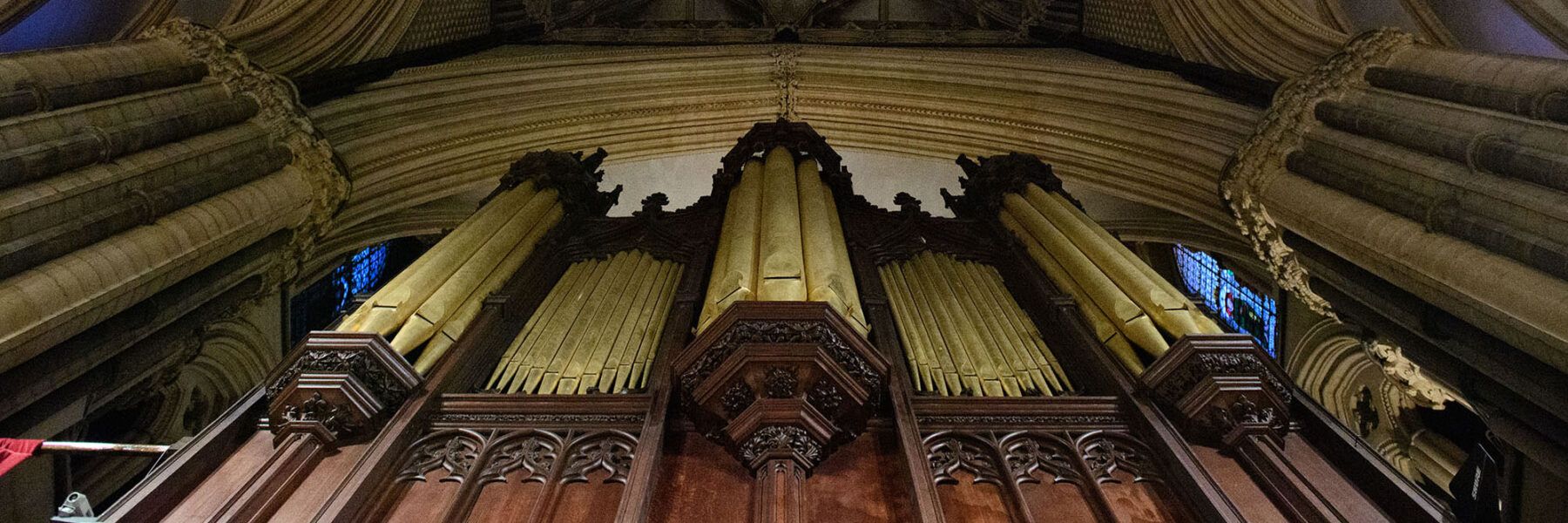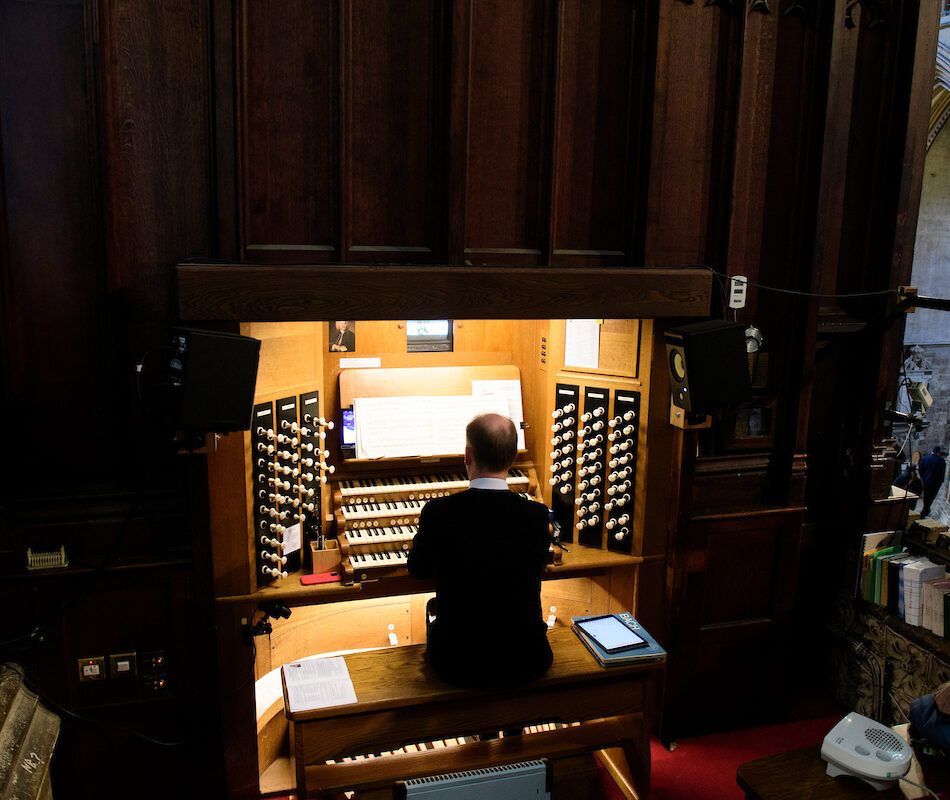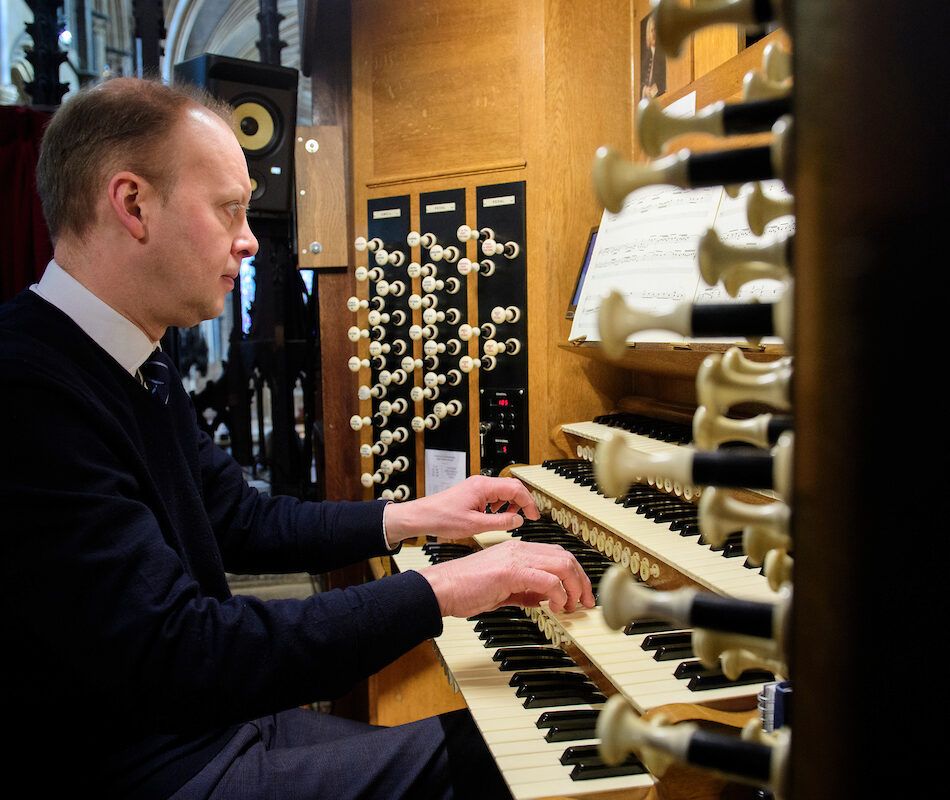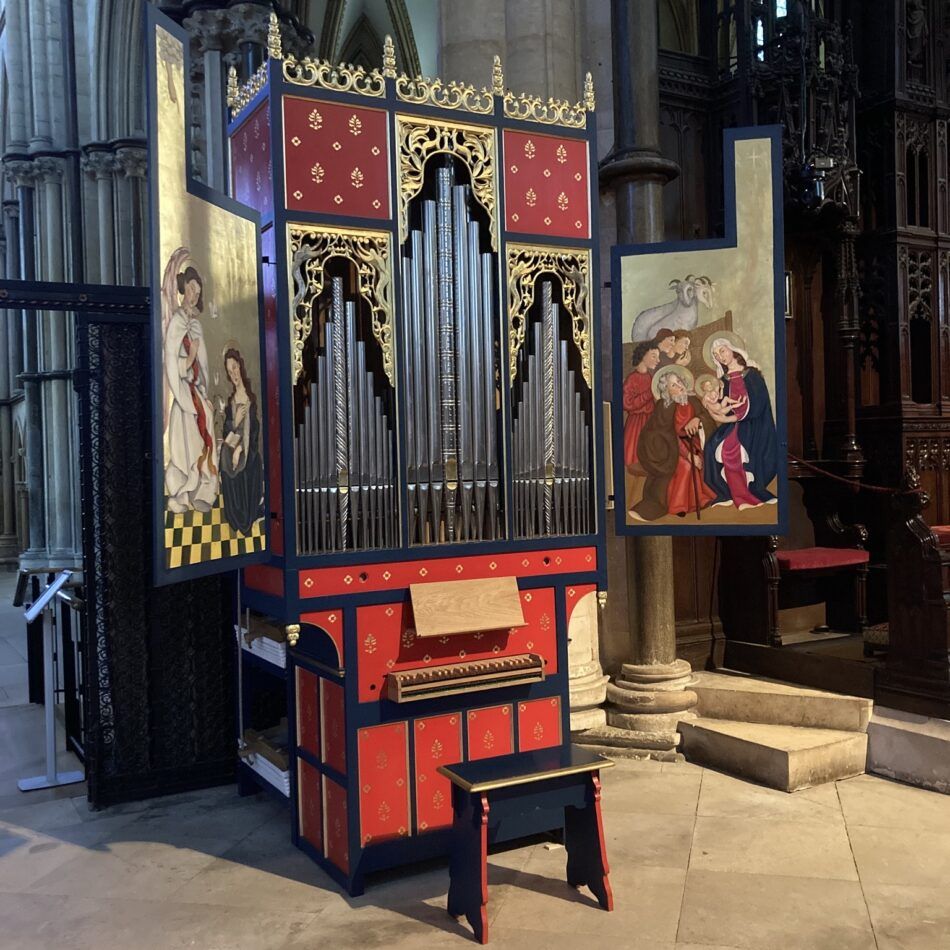
‘Father’ Henry Willis
Lincoln Cathedral is fortunate to have an organ that is admired by players across the world. Completed in 1898, it proved to be the last completed cathedral instrument finished by ‘Father’ Henry Willis himself, and one of his finest.
It also has the distinction of being one of the two Father Willis organs in English cathedrals to retain its original tonal scheme. It is a magnificent instrument both for solo recital playing and for accompanying the daily routine of worship in the cathedral, supporting both large-scale congregational singing in the nave and the more subtle requirements of colouring Psalms, anthems and canticles alongside the cathedral choir.
You can download the full organ specification here
History of the Lincoln Father Willis Organ
In 1826, William Allen built a new organ on the choir screen in a case designed by the Lincoln architect E J Wilson. Earlier instruments had been sited on the north side of St Hugh’s Choir. The Allen instrument proved insufficiently powerful for services in the nave, a problem which was apparently not remedied by the enlargement carried out by Allen’s son, Charles, in 1851.
Henry Willis designed a new organ in 1885, but building work could not be undertaken due to a lack of funds. When Dr G J Bennett was appointed Organist in 1895, the Precentor warned him that ‘…the organ is a queer old instrument… We shall certainly hope to get a new organ, but it may be some years first. We have no funds for the purpose…’
The new organ
The realisation of Willis’s scheme was made possible when the Lincoln industrialist, Alfred Shuttleworth gave £1000 towards the total £4675 cost, with the remainder being met by several other individual donations, and by public subscription. This new organ was based on Willis’s 1885 design, and incorporated a few pipes from the earlier Allen instrument. Much larger than its predecessor, it required the enlargement of the Allen case, and the siting of the largest pedal pipes in the north triforium, along with the swell organ and the blowing plant. The organ was dedicated on St Hugh’s Day, 17 November, 1898, before a congregation of 4700.
It was to be the first British cathedral organ to be blown by electricity, but at the time of its inauguration, Lincoln’s power station had not yet entered service, so it was pumped manually by soldiers of the Lincolnshire Regiment! No changes were made until 1960, when Harrison and Harrison Ltd carried out a complete rebuild at a cost of £14000. Six new registers were added, but the Willis pipework was left unaltered.
The action and blowing equipment were renewed, and a new console provided. The console removed as part of this rebuild can be seen in the cathedral’s exhibition centre. A further restoration was undertaken by the same firm in 1998, and the organ was rededicated on 20 November, just over a century after it was first played in public.
Organ recitals
A series of recitals is given each year, given by our team of cathedral organists and by visiting players from across the world. Jeffrey Makinson, the cathedral organist, and Dr Colin Walsh, our organist emeritus, perform regularly in Lincoln.
In recent years, recitals have been given on the cathedral’s Father Willis instrument by artists including Olivier Latry, Daniel Roth, John Scott, Simon Preston, Dr Francis Jackson, Carlo Curley, Winifred Bonig, Martin Baker, James O’Donnell, Martin Neary, Thomas Trotter, Philippe Lefebvre and Jean Guillou.

Adopt an organ pipe today

Smaller Instruments
There are three smaller single-manual organs also to be found in the cathedral, one at the west end for use at baptisms, one in St Hugh’s shrine, built by the late Dr Philip Marshall, organist 1966-86, and a third, by Kenneth Tickell, for use in verse anthems with the choir.
During the summer months of 2023, Lincoln Cathedral is also hosting the St Teilo Organ, built to historic specifications, and blown by hand, as part of the celebration of the life and work of the composer William Byrd, 1540-1623.